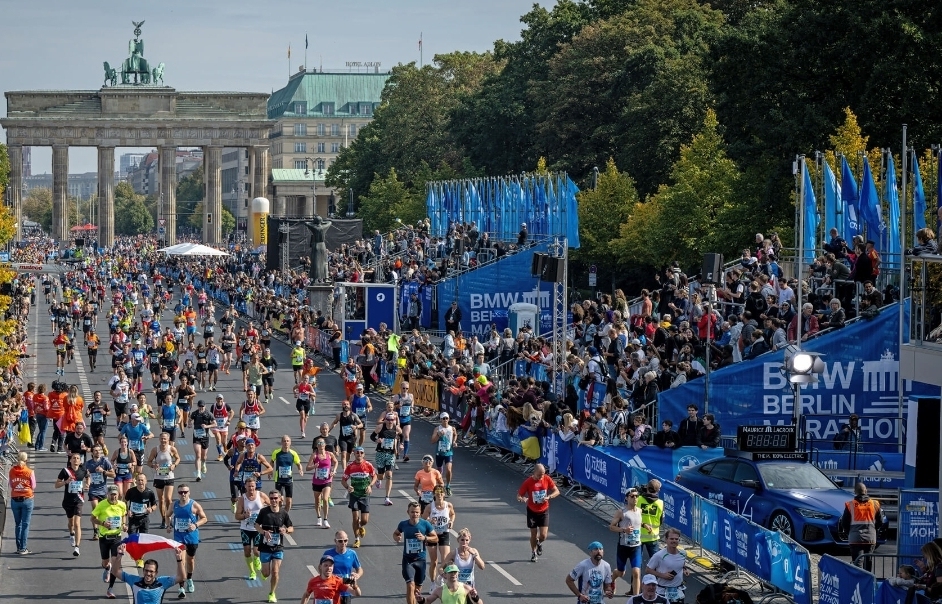There are many elements which lead to a successful marathon performance. You need the appropriate training, the mental resilience, and the correct race-day nutrition. Perhaps the most important however, is the ability to execute a pacing plan which is realistic for your fitness and expectations. We’ve all been there, ten miles from the finish line, when the spiral of doom starts to approach. You can see it, but you try to block it out, assuming this level of pain and discomfort is normal. We can normally ignore it for another while, now relying on sheer willpower. This may have been enough to get to the finish line in a 10k or half marathon, but the full distance is a different beast. And when you do not treat it with respect, it bites. The final six miles can include cramping, walking, crying, or all the above. This can be enough to taint your experience so much that another marathon, or even running in general, is off the table. On the other hand, nail your pacing plan and you will wonder what all the fuss was about.
Firstly, you need to know your fitness at the start of the training block. People often pluck a planned finish time from thin air. Yes, it can be ambitious, but it needs to be realistic. A recent 10k or half marathon can guide this, but always err on the side of caution here. Planning to finish ten minutes slower than the ideal time may get you across the line half an hour earlier if that time was not realistic. Your training plan then needs to be built around this time goal, with race pace efforts, slower easier runs and faster tempo sessions programmed accordingly.
The other big determining factor will be the race day conditions. You will know the course profile and elevation well in advance, so your strategy needs to take this into account. Closer to the time, the weather may mean making some last-minute adjustments, usually towards the conservative end of the scale.
The gold standard for pacing is a small negative split, meaning you ran the second half slightly quicker than the first half. This can be reversed based on conditions, if a lot of the elevation comes in the second half. However, the thing to avoid, which happens all too often, is the big positive split. Far too many 10k and half marathon PBs are set during the first half of a marathon – these people, feeling on top of the world at 21km, have just bought a one-way ticket to Hell.
We’ve all heard the famous running phrase of “I hit the wall.” But pay attention, and this will normally be prefaced by “It was all going great until 30km…”. More often than not, it wasn’t going great; you had started too fast but you didn’t realise it. A poorly executed nutrition plan can yield similar results, but often the pacing is the problem.
The reason why a slight negative split is so hard to get right, particularly for a novice runner, is that it doesn’t feel right. You feel as if you are setting off too slow. You start to panic. Your average pace could be 15-20 seconds per km slower than finish time pace. That is correct – you are playing the long game. As you gradually increase the pace you start to reap the rewards. From the halfway point the fast starters are beginning to feel their mistakes kick in. By 30km, as you nudge the pace up again, there is carnage all around you. Even if you don’t have an extra push for the final 10km, and the pace remains exactly the same, you will feel much quicker as you stride past the aforementioned crampers, walkers and criers. The psychological boost gained from this is massive. Hopefully all of this means you are on track for your target time. And then it’s time to give it all you’ve got – it sounds like a marathon up until this point is easy, but it still requires a huge mental and physical effort. Strangely, if you achieve it, at some point that day you will probably say “I could have gone quicker.” In fact, that means you absolutely nailed it.
Even if you don’t end up with the A-goal time, you shouldn’t have missed it by much, haven’t had a near death experience, and are not likely to throw the running shoes in the bin at the finish line. People generally improve their marathon results over time, even achieving PBs into their 40s and 50s. That is because you learn valuable lessons each time. And when you keep adding these lessons together, the results should improve. But if your pacing goes badly wrong, you probably won’t stick around long enough to learn the lessons.
Enda offers several 1:1 coaching programmes for runners of all abilities, which include specific race day advice such as this. To find out more click HERE, and to book a free initial consultation with him, contact via https://www.instagram.com/thep...
